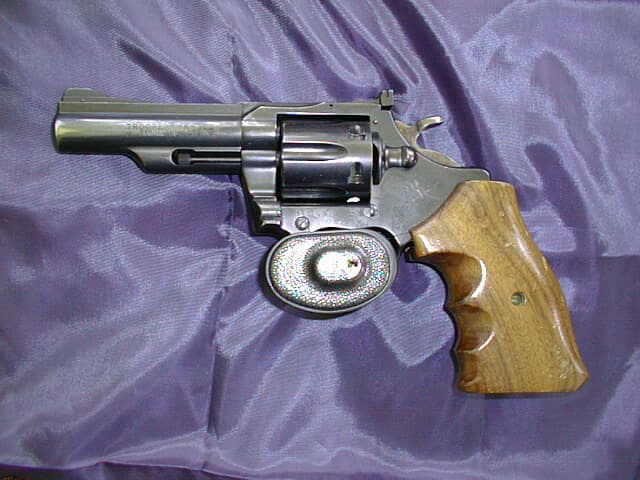Here we are again: another firearms-related death of a child that could have been prevented, with the police saying that the shooting was an accident so . . . that’s OK then. Not really, but you know: the family’s suffered enough. For the record, my heart is not made of stone. I think very carefully before labeling a bereaved parent an irresponsible gun owner. I pray to God (regularly) that I never experience one one-hundredth of their pain and sorrow. But I believe that we owe it to children killed by a negligent discharge to use their story to prevent similar tragedies. There’s no getting around it: sometimes the more painful a lesson, the more important it is—for everyone concerned. The police should use these events, as we do, as teachable moments. Anyway, these are the facts, as reported by walb.com . . .
13 year old Love Lunsford died from a gunshot wound to the neck December 7th. Investigators say she and several relatives were playing in the living room when her 15 year old brother, who has a mental disability, got his father’s rifle and fired it once, despite the trigger lock on the weapon.
District Attorney Greg Edwards said “there was a sincere effort to make the weapon safe, but the mechanism that was used didn’t quite fit this particular weapon.”
There are some major problems with the DA’s reasoning. First of all, intent has nothing to do with it, legally speaking. Either you secure a weapon properly or you don’t. “I tried to,” is no defense. It is, perhaps, a mitigating factor. But it does not, as implied here, excuse Mr. Lunsford from his failure to properly secure a loaded firearm.
Secondly, we’re once again confronted by IGOTD’s old nemesis: passive construction. A “mechanism that was used” should be “a mechanism that Mr. Lunsford used.” Responsibility and accountability are the yin and yang of gun ownership.
Further, why didn’t the mechanism “quite” fit the weapon? If Mr. Lunsford used an inappropriate trigger lock, the term should have been used. The police/DA should have IDed the type of lock involved, illustrated Mr. Lunsford’s mistake and told taxpayers how to avoid a similar event. Instead we get this:
The District Attorney said with kids spending more time at home during the holidays, it’s a good time to check all your guns and make sure they are locked and safeguarded to prevent any other tragedies.
This bland statement sounds like a valuable public service, but it’s no help to anyone, really. I mean, when is it a BAD time to check your guns’ storage safety? The DA’s remarks imply that if your kids AREN’T spending more time at home you can let that gun safety thing slide, a bit.
Besides, it’s not even half the story. As we’ve said here many, many times, locking-up or disabling your gun can easily create a false sense of security. KIDS CAN DEFEAT LOCKS AND OPEN SAFES. They’re clever little bastards. The only real gun safety you can ever have with children: children who understand gun safety. Kids with hands-ON experience and practical knowledge of firearms who follow all the safety rules.
More to the point, safety is not a constant. There are times when you need basic firearms security and times when you need even MORE firearms security. For example, small bedside gun safes are not sufficient when you leave your home for an extended period of time. You need to put them in a big ass main safe to shelter your guns from determined thieves.
Some owners may want to keep a gun more readily accessible at night, knowing their children are aware of firearms safety. If there’s a sleepover, especially teenagers, it’s time to transfer the weapons to a more secure place.
This case, involving a child with a mental disability, underscores that point. Whereas a trigger lock might be enough protection for some families, some families need to take extra precautions. Especially in homes where drug abuse or mental health issues arise. Keeping guns unloaded, with ammunition stored in a separate location, is just ONE of the steps a responsible firearms owner should consider in that circumstance.
In fact, there are times when removing guns from the home is the only intelligent course of action. It’s a judgement call, obviously. Balancing self-defense against a potential accident or suicide. But responsibility requires the regular exercise of judgement. And a good part of that wisdom comes from learning from the experience of others. Sad but true.





It seems that the child who shot the rifle was not capable of being trained, so that’s not an issue in this case. So, who loaded the rifle? Was it locked with a round chambered? Was the ammo kept under lock and key? If Mr. Lunsford locked up his ammo and used the trigger lock supplied with the firearm, then he certainly did everything he could. The problem with the hoplophobic focus that has been forced upon us is that it all falls on the gun. A rifle without ammo is just an expensive club. A handgun without ammo is an expensive and lousy club. A trigger guard on a rifle will only go so far. A heavy padlock on a steel ammo case is even more important.
Hoplophobia! Excellent word.
I agree with all of your points about taking and issuing responsibility. Unfortunately, in our current political climate supporters of every issue tend to soft pedal and excuse bad behavior to countermeasure their opponents who will pound hard on every item. America is miles away from constructive conversation.
Although I agree with the gun safety points made, I don’t agree that “intent has nothing to do with it, legally speaking.”
Intent may have nothing to do with it, speaking in terms of proper gun safety… But legally speaking, intent has a lot to do with it.
Comments are closed.